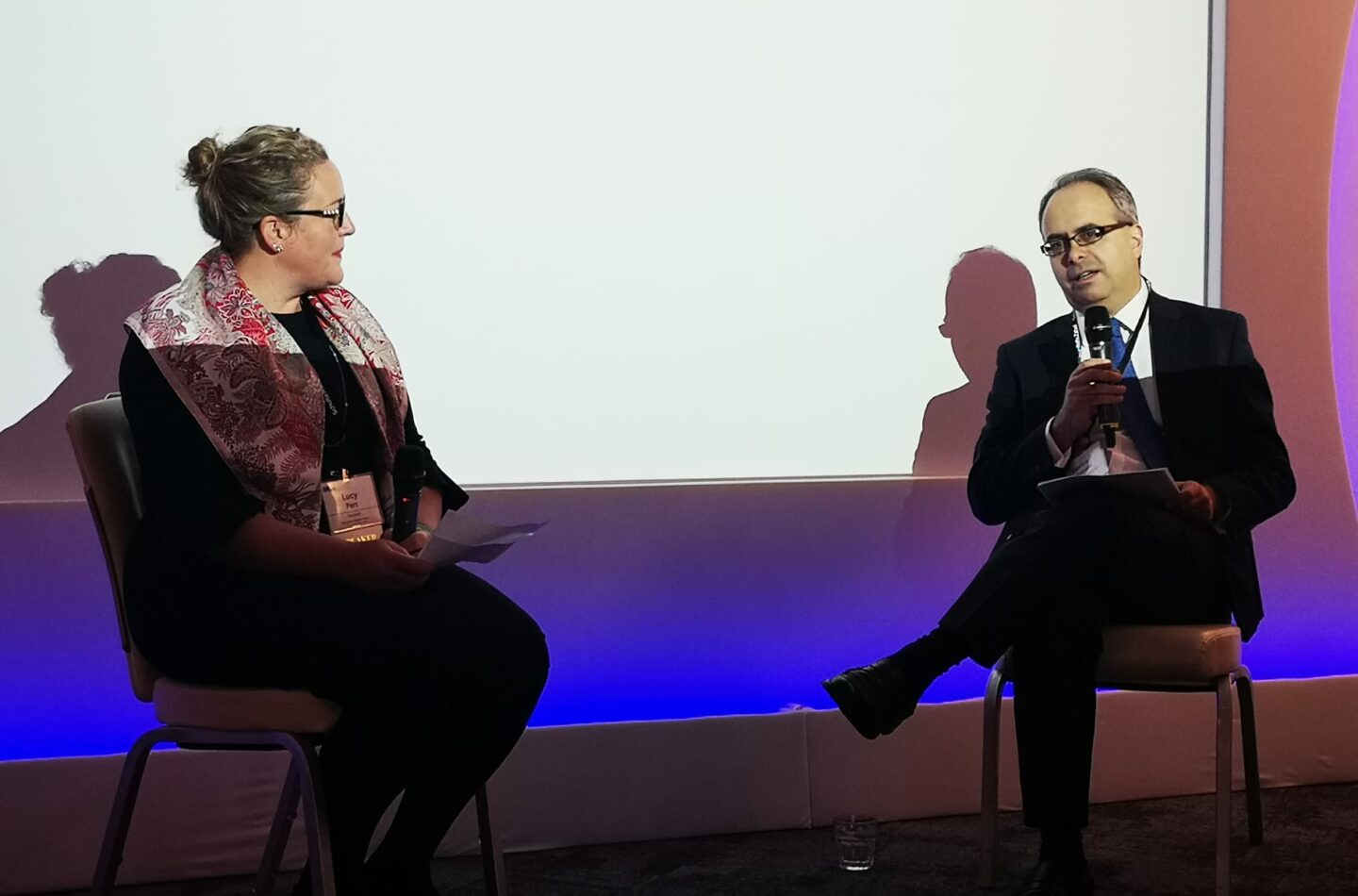Underwriting director Rocco Pirozzolo had a fireside chat with Hausfeld partner Lucy Pert at IMN’s Inaugural International Litigation Finance Forum in London on Tuesday, 18 October, before an audience of litigation funders, litigation lawyers and dispute insurance brokers
Lucy started by asking Rocco how the dispute insurance market has evolved since the early days when it mainly focused on bodily injury cases.
Rocco said that from around 2007 onwards, a lot of corporates, including banks, insurance companies and FTSE companies saw the virtues of dispute insurance. “Now, if you look at Harbour Underwriting’s portfolio,” he said, “a lot of our insureds are litigation funders taking out policies in their own name because they’ve provided an indemnity for adverse costs in the litigation funder’s agreement, so they have an insurable interest.”
Due diligence
Lucy asked if dispute insurers rely on the due diligence of litigation funders or do their own due diligence.
Rocco said he would look at a funder’s due diligence, if provided. But, he said, “there is a danger of slavishly relying on it as fundamentally you have two different business models. With the funding model, the return on investment is significantly higher than an insurance premium. If an insurer simply insured all the business a funder was funding, you would probably have an underwriting loss.”
He continued: “I know of one insurer (who will remain nameless) that came into the dispute insurance space in a blaze of glory attracted by the size of the premiums. They blindly followed the funders and made quite a big underwriting loss and left within two years.”
Lucy asked if funders and insurers looking at the same criteria when assessing cases. Rocco said no, funders look at things differently. “Our legal training focuses on the merits of a claim. But I remember from my time in litigation funding that funders look at enforcement first, then the true value of the case, a realistic costs budget and if the economics work. They look at the merits last,” he said. But, he continued, “there are instances where quantum is relevant, for example, where you have a deposit premium and are holding out for a contingent premium. There, you might be relying on a funder’s analysis as they will undoubtedly have looked at that in some detail.”
Types of cases insured
Lucy and Rocco then discussed how the types of cases insured had changed over the years. Rocco explained that the dispute insurance market has over the last few years followed the fortunes of the litigation funding market. “In the early days,” he said, “the focus would have been on single cases, insolvency-related cases, professional negligence and contractual claims. Now, we are seeing the pendulum swinging into class actions and group actions. Also, in the early years, it was very much England and Wales focused and now it has heavy footprints in Australia, Canada and various other jurisdictions. We have effectively been shadowing the litigation funding market.”
The cost of dispute insurance
Lucy challenged Rocco on the high cost of dispute insurance. Rocco explained that unlike some other classes of insurance, such as motor cover, “when you buy a dispute insurance policy, there’s a dispute and the outcome is binary. You are going to win or lose. In that respect, there is something unique about disputeinsurance which affects pricing. The principle in insurance of many paying premiums to cover a few claims is more difficult in dispute insurance as each case is all or nothing, and the limits are real. If your case goes to trial and you lose, there’s real exposure and a pay out.”
Rocco said, however, that dispute insurance market has been working with deposit and contingent premiums to help alleviate this issue. “Instead of asking for a single premium up front or a staged premium, you can have a deposit premium where an insurer is also riding on the fortunes of the case in the way a litigation funder or sometimes lawyers are.”
Rocco disagreed with Lucy’s suggestion that the cost of dispute insurance represents a barrier to access to justice. He said you could point to all the players in litigation, such as solicitors, barristers, and funders, when discussing the cost of litigation. And equally, there are lots of cases, such as class actions, where dispute insurance can be used as a way to deliver access to justice.
Litigation insurance products
Lucy and Rocco then discussed the various insurance products available other than adverse costs cover, including anti-avoidance endorsements and deeds of indemnity. These, said Rocco, are particularly useful when defendants try to “stifle” claims by applying for security for costs orders.
How to choose a dispute insurance provider
Finally, Lucy asked Rocco to outline what factors claimants, lawyers or funders should consider when choosing which dispute insurance provider to use.
Rocco said the quality of the insurer and their rating is important. As is their ability to deal with certain issues, such as providing a deed of indemnity if an anti-avoidance endorsement is not acceptable to satisfy a security for costs order. “Finally,” he said, “you should look at the quality of the underwriting team in the same way a funder or dispute insurer will look at the quality of the solicitors or barristers and whether they are up to the job.”


